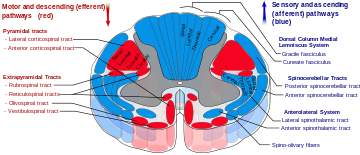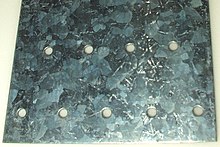THERMAL POWER STATION
A thermal power station is a power plant in which the prime mover is steam driven. Water is heated, turns into steam and spins a steam turbine which drives an electrical generator. After it passes through the turbine, the steam is condensed in a condenser and recycled to where it was heated; this is known as a Rankine cycle. The greatest variation in the design of thermal power stations is due to the different fossil fuel resources generally used to heat the water. Some prefer to use the term energy center because such facilities convert forms of heat energy into electrical energy. Certain thermal power plants also are designed to produce heat energy for industrial purposes of district heating, or desalination of water, in addition to generating electrical power. Globally, fossil fueled thermal power plants produce a large part of man-made CO2 emissions to the atmosphere, and efforts to reduce these are many, varied and widespread.
A thermal power station is a power plant in which the prime mover is steam driven. Water is heated, turns into steam and spins a steam turbine which drives an electrical generator. After it passes through the turbine, the steam is condensed in a condenser and recycled to where it was heated; this is known as a Rankine cycle. The greatest variation in the design of thermal power stations is due to the different fossil fuel resources generally used to heat the water. Some prefer to use the term energy center because such facilities convert forms of heat energy into electrical energy. Certain thermal power plants also are designed to produce heat energy for industrial purposes of district heating, or desalination of water, in addition to generating electrical power. Globally, fossil fueled thermal power plants produce a large part of man-made CO2 emissions to the atmosphere, and efforts to reduce these are many, varied and widespread.
Typical thermal power plant:
Typical diagram of a coal-fired thermal power station
| 1. Cooling tower | 10. Steam Control valve | 19. Superheater |
| 2. Cooling water pump | 11. High pressure steam turbine | 20. Forced draught (draft) fan |
| 3. transmission line (3-phase) | 12. Deaerator | 21. Reheater |
| 4. Step-up transformer (3-phase) | 13. Feedwater heater | 22. Combustion air intake |
| 5. Electrical generator (3-phase) | 14. Coal conveyor | 23. Economiser |
| 6. Low pressure steam turbine | 15. Coal hopper | 24. Air preheater |
| 7. Condensate pump | 16. Coal pulverizer | 25. Precipitator |
| 8. Surface condenser | 17. Boiler steam drum | 26. Induced draught (draft) fan |
| 9. Intermediate pressure steam turbine | 18. Bottom ash hopper | 27. Flue gas stack |
source:www.youtube.com
http://en.wikipedia.org/wiki/Thermal_power_station


.jpg)










